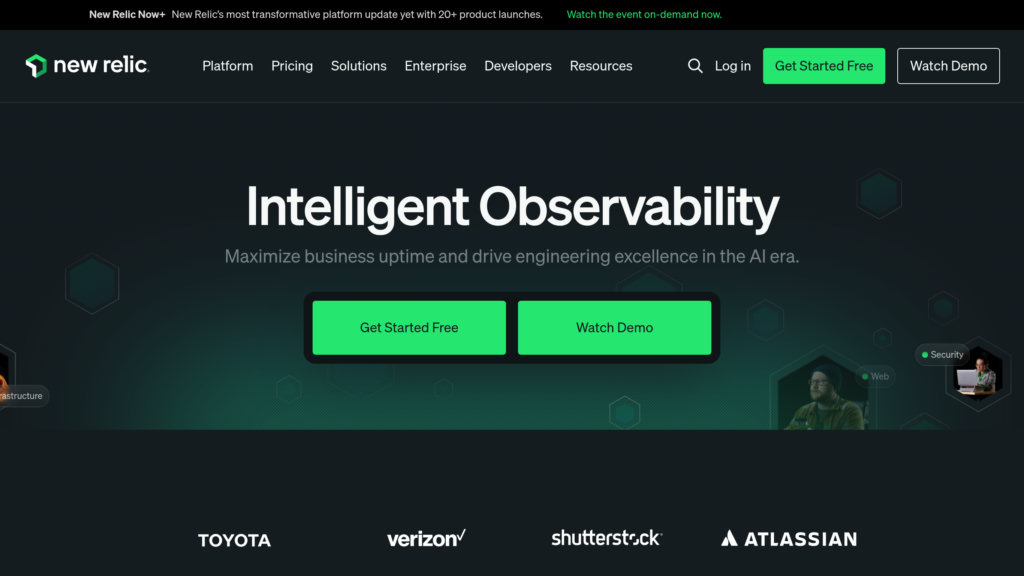New Relic
Cloud observability platform for real-time monitoring and troubleshooting
Introduction
What is New Relic?
New Relic stands as a premier cloud-native observability solution that grants complete transparency into application performance, infrastructure status, and user interactions. The platform merges diverse data types—metrics, traces, logs, and events—into a single pane of glass, empowering technical teams with AI-enhanced diagnostics across cloud, on-premises, and hybrid deployments. It excels at scaling to meet the demands of contemporary distributed systems and microservices architectures.
Key Features:
• End-to-End System Visibility: Gain holistic insights across your entire technology stack—from user interfaces and backend services to underlying infrastructure and network components—through unified data correlation.
• Intelligent Analytics and Notifications: Utilize advanced machine learning algorithms to spot unusual patterns, deliver preemptive alerts, and recommend practical solutions.
• Cross-Service Request Tracking: Follow transaction paths through microservices and distributed environments to rapidly pinpoint performance constraints and underlying issues.
• Customizable Analytics and Query Tools: Build personalized dashboards and set up targeted alerts using New Relic's specialized query language for sophisticated data exploration.
• Infrastructure Health Tracking: Obtain live insights into servers, containerized applications, cloud deployments, and system modifications with automated configuration tracking.
• Adaptive Pricing Model: Benefit from a flexible, consumption-based billing approach that charges solely for actual usage, catering to organizations of any scale.
Use Cases:
• Application Performance Management: Monitor key application metrics like speed, failure rates, and capacity to enhance reliability and user satisfaction.
• Issue Resolution and System Diagnostics: Quickly identify and address service disruptions or performance issues using detailed transaction analysis and error intelligence.
• Cloud and Infrastructure Oversight: Keep cloud assets, containers, and server clusters under surveillance to maintain operational health and budgetary control.
• Development and Deployment Integration: Evaluate release effects and uphold quality benchmarks by embedding monitoring capabilities into continuous integration pipelines.
• Digital User Experience Analysis: Capture and analyze customer journey data and interface performance to boost interaction quality and business outcomes.
